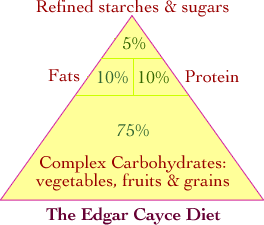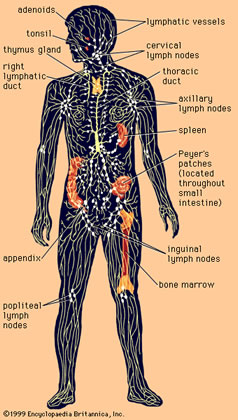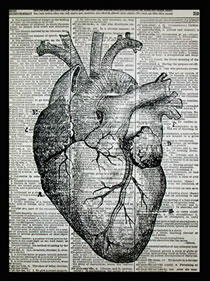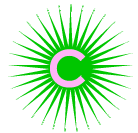Edgar Cayce's Four Basic Elements of Good Health
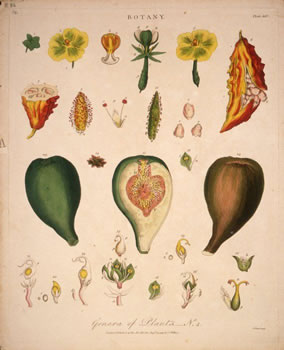
When
studying the readings, doctors working with Cayce were forced to expand
their understanding of the role that four basic processes played in
governing the health of the body. These four processes, which Cayce
said affected our cells’ ability to reproduce and function properly
were: Assimilation Elimination Circulation and Relaxation |
Assimilation Assimilation,
which appeared in almost one quarter of the medical readings, referred
not only to the body's intake of nutrients, but also to process of
digestion. Cayce frequently warned against eating when upset, angry
or distressed, saying that due to the resulting physiological changes
in the body, food would remain undigested and become toxic to the
system. Cayce also spoke of avoiding certain food combinations, specifically
those foods requiring different acids to be digested. If such foods
were eaten together, Cayce said, one type would be digested while
the other would sit and ferment in the stomach thus becoming toxic
to the body.
Long after Cayce's death, many of the seemingly radical guidelines he offered in the 1930's would be seen as having merit. But some of Cayce's recommendations still seem strange to this day. For instance, he stated in several readings that while tomatoes contain more nutrients than any other single food, when not vine-ripened, they are toxic to the human body. He also stated that carbonated drinks were to be almost always avoided, not just because of the sugar or artificial sweetener in them, but because they interfered with the interaction between the liver and the kidney. Other gems offered by Cayce included such statements as: apples should never be eaten raw, only baked or cooked, unless used for fasting purposes; only the peel of the white potato was of any real nutritional value; and coffee and tea become toxic when combined with milk or cream.
|
|
Elimination Poor elimination was cited as being at the root of a great number of illnesses, and references to it appeared in over half of Cayce's medical readings. Apart from taking in nourishment, human cells must also eliminate waste products and toxins to remain healthy, and according to the Cayce readings, "[if] the assimilations and eliminations...[were] kept nearer normal in the human family, the days might be extended to whatever period as was so desired, for the system is...able to bring resuscitation so long as the eliminations do not hinder."
Cayce suggested many different aids to elimination. One of the simplest was to drink a cup of hot water with a squeeze of lemon juice each morning upon rising and before eating, which apparently helped the body eliminate the toxins thrown off during sleep. Similarly, he recommended doing deep breathing exercises each morning to eliminate toxins pooled in the lungs from the shallow breathing characteristic of sleep. Dietary measures were also recommended to improve bowel activity, which included eating leafy vegetables and stewed fruit such as figs and raisins. He also suggested drinking as much as six to eight glasses of water a day.
In extreme cases of toxemia, Cayce recommended enemas and colonics, adding that these could also be used by healthy people. "For everyone—everybody—should take an internal bath occasionally as well as an external one."
|
| Circulation The third aspect of sustaining good health, according to Cayce, was circulation. "The circulation...is the main attribute to the physical body, or that which keeps life in the whole system," he often said in trance, and references to circulation turned up in approximately sixty-percent of the readings. Highlighting the role that circulation plays in assimilation and elimination, he pointed out that "there is no condition existent in a body that the reflection of same may not be traced to the blood supply, for not only does the blood stream carry the rebuilding forces to the body, it also takes the used forces and eliminates same through their proper channels." In the same reading, Cayce made a startling prophetic remark: "The day may yet arrive when one may take a drop of blood and diagnose the condition of any physical body."
Cayce made reference not only to arterial circulation, but lymphatic
circulation, which he considered to be just as important. The Source
referred to the fluid in the lymphatic system as "white blood"
or "lymph blood," and pointed out that unlike the arterial
system which has both the heart and the muscle-lined wall of the arteries
to move the blood along, the lymph system has no pump of its own,
and it relies on other methods to move waste matter out of the body.
One method Cayce recommended was massage. Although it was considered
by many to be nothing more than idle pampering, Cayce saw massage
as curative, particularly for the inactive.
|
| Relaxation
The
fourth process Cayce considered vital to good health was what he referred
to as relaxation. In trance, Cayce stated that "the activity
of the mental or soul force of the body may control entirely the whole
physical [body] through the action of the balance in the sympathetic
[nervous] system, for the sympathetic nerve system is to the soul
and spirit forces as the cerebrospinal is to the physical forces of
an entity." The nervous system was the vehicle through which
Cayce's "mind as the builder" could most directly influence
the body.
Although modern-day medical practitioners often look upon the power
of "suggestion" as pseudo science, Cayce often recommended
that positive suggestion be a part of a patient's daily treatment.
Cayce said that emotions, both positive and negative, moved as electric
energies through the nervous system, affecting the entire organism.
His message here was that the nervous system acts as a conduit and
carries impulses and instructions to every cell in the body. Positive
and negative thoughts could therefore physically alter each cell's
functioning. Again, Cayce was far ahead of his time in pinpointing
the role that stress played in one's overall health. In one reading
Cayce—in trance—stated that "worry and fear [are]
the greatest foes to [a] normal healthy physical body." For another
patient he said, "For thoughts are things! And they have their
effect upon individuals...just as physical as sticking a pin in the
hand!" Cayce also said that a preoccupation with a particular illness could result in the manifestation of that illness in one's own life. To maintain health, Cayce suggested that "quiet, meditation, for a half to a minute, will bring strength...[if the body will] see physically this flowing out to quiet self, whether walking, standing still, or resting." And Cayce urged patients to find balance in their lives: "Budget the time so that there may be a regular period for sustaining the physical being and also for sustaining the mental and spiritual being. As it is necessary...for recreation and rest for the physical, so it is necessary that there be recreation and rest for the mental."
|

